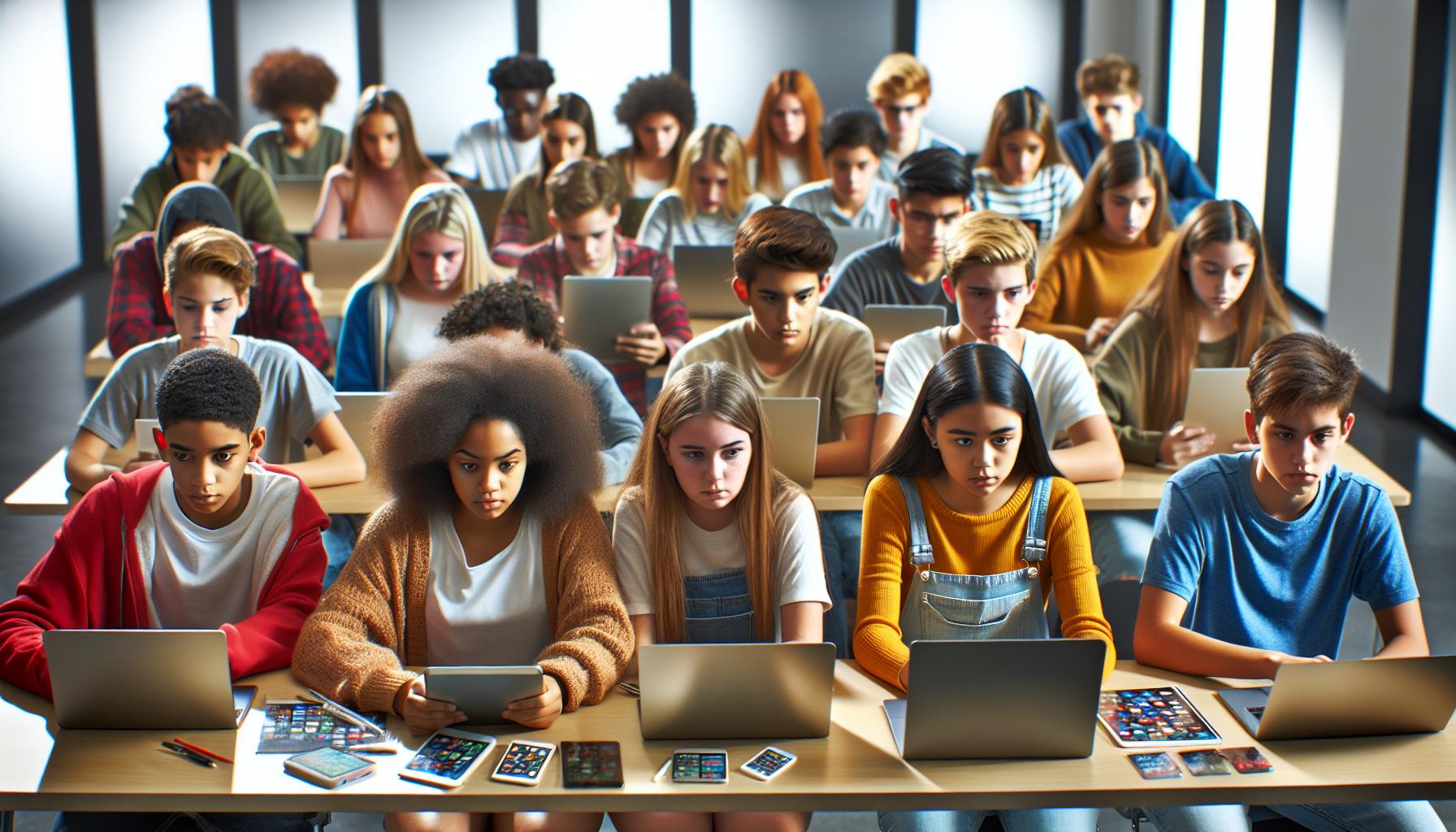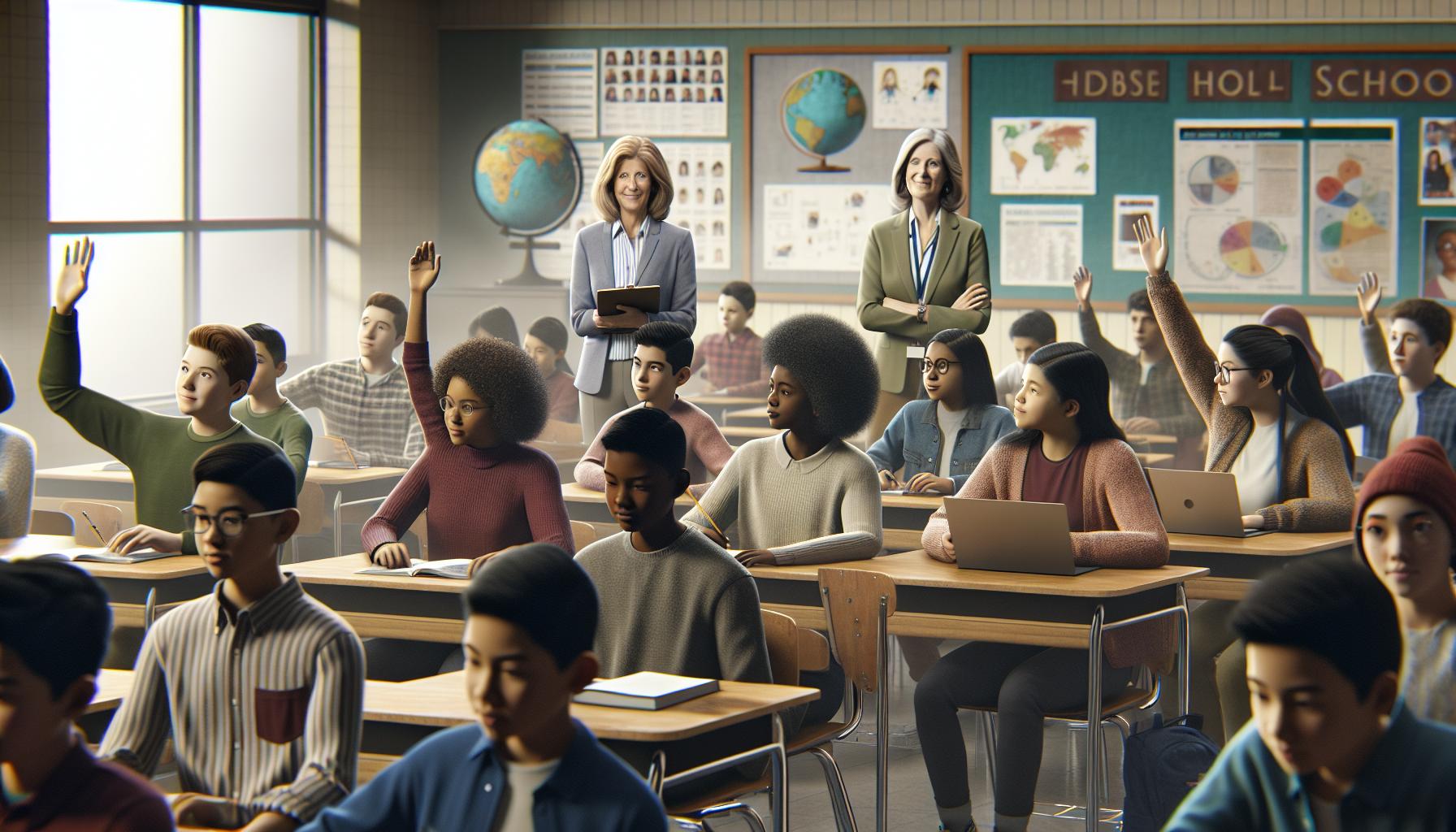Key Takeaways
- Understand Key Risks: Awareness of cyberbullying, inappropriate content, and privacy concerns is vital for middle schoolers to navigate social media safely.
- Foster Open Communication: Encourage ongoing dialogue between parents, educators, and students to identify and address online issues proactively.
- Establish Clear Guidelines: Set boundaries around social media use, including time limits, acceptable platforms, and content-sharing rules.
- Educate on Digital Footprint: Teach students about the permanence of their online actions and the importance of managing their digital reputation.
- Promote Responsible Sharing: Encourage critical thinking about personal information shared online and the potential consequences of their actions.
In today’s digital age, social media has become an integral part of middle schoolers’ lives. With platforms like Instagram, Snapchat, and TikTok gaining immense popularity, kids are more connected than ever. However, this connectivity comes with significant risks that parents and educators need to address. Understanding social media safety is crucial for protecting young users from cyberbullying, inappropriate content, and privacy breaches.
Navigating the online world can be overwhelming for both students and their guardians. It’s essential to equip middle schoolers with the knowledge and tools to use social media responsibly. By fostering open communication and setting clear guidelines, families can create a safer online environment. This article delves into practical strategies and tips to help ensure that young users can enjoy the benefits of social media while minimizing potential dangers.
Social Media Safety For Middle School
Understanding social media safety involves recognizing potential risks and taking proactive measures. Middle schoolers often lack awareness of the dangers presented by various platforms. Key concerns include cyberbullying, exposure to inappropriate content, and privacy breaches.
Key Risks
- Cyberbullying: Bullying behavior, including intimidation and harassment, can occur through messages and comments. Parents and educators should monitor interactions to address issues early.
- Inappropriate Content: Students may encounter explicit or harmful material. Using parental controls and content filters helps manage exposure.
- Privacy Breaches: Sharing personal information may lead to risks like identity theft. Encourage kids to limit personal data shared online.
- Addiction and Screen Time: Excessive use of social media may disrupt daily activities and sleep patterns. Set limits on screen time to promote balance.
- Open Communication: Foster open dialogue with students about their online experiences. Regular discussions help identify trends and concerns.
- Education on Digital Footprint: Inform kids about their digital footprint and the permanence of online actions. Teach them the importance of responsible sharing.
- Setting Guidelines: Collaborate with children to establish social media guidelines. Develop rules regarding appropriate platforms, privacy settings, and content sharing.
- Monitoring Activity: Encourage parents to monitor social media usage while respecting privacy. Using apps specifically designed for monitoring can aid in oversight.
- Promoting Empathy Online: Instill values of kindness and respect in digital interactions. Encourage students to think before posting and to consider how their words affect others.
By grasping these elements of social media safety, middle schoolers can navigate online spaces more responsibly. Implementing strategies reinforces safe practices and helps minimize risks associated with social media use.
Common Social Media Risks

Understanding social media risks is crucial for middle schoolers. Awareness of these dangers promotes safer online experiences.
Cyberbullying
Cyberbullying poses significant threats to middle schoolers. It includes harassing messages, spreading rumors, and posting embarrassing images. According to a report by the Cyberbullying Research Center, about 36% of students experienced cyberbullying at least once. Victims often face emotional distress, anxiety, and lowered self-esteem. Encouraging open communication with trusted adults can help children report bullying incidents and seek support.
Privacy Concerns
Privacy concerns are vital when using social media. Young users often share personal information without realizing its implications. A study from the Pew Research Center indicates 69% of teens use social media, where they may expose their location, contact details, and more. Misuse of shared information can lead to identity theft or unwanted contact. Teaching middle schoolers about privacy settings and the importance of restricting access to personal profiles is essential for safeguarding their online presence.
Tips for Parents and Educators

Understanding the landscape of social media is crucial for parents and educators. Implementing specific strategies can foster a safer online environment for middle schoolers.
Setting Boundaries
Establish clear rules around social media use to create a sense of security. Define time limits for daily usage to prevent excessive screen time, ensuring that online activities do not interfere with academic responsibilities and personal relationships. Discuss acceptable platforms, emphasizing age-appropriate sites. Create family agreements that outline expected behavior online, such as not engaging with unknown users and respecting privacy settings. Regularly revisit these guidelines to adapt as social media trends evolve.
Monitoring Online Activity
Consistent monitoring of social media activity helps protect children from potential dangers. Encourage transparency by requesting access to their accounts, fostering trust through open dialogue about online interactions. Use parental controls to limit access to certain content and platforms, fitting their developmental stage. Discuss the importance of reporting suspicious behavior or uncomfortable situations to trusted adults. Engaging in discussions about their online experiences promotes accountability and helps middle schoolers develop critical thinking skills regarding social media interactions.
Best Practices for Students

Middle schoolers can adopt several best practices to ensure their safety on social media platforms. Implementing these strategies promotes a secure online experience and responsible digital interactions.
Personal Information Protection
Protecting personal information is crucial. Students must avoid sharing sensitive details like their full names, addresses, phone numbers, and school names online. Adjust privacy settings on social media accounts to limit who can view profiles and posts. Encourage students to think critically about the information they share and consider potential consequences before posting. Using strong, unique passwords for each account adds an extra layer of security. Remind students that not everyone online has good intentions, prompting them to verify contacts before accepting friend requests.
Responsible Digital Footprint
Maintaining a responsible digital footprint is essential. Students should understand that online actions can leave lasting impressions. They must think before posting, ensuring content reflects their values and character. Remind students that potential schools and employers may review their online presence. Encourage them to regularly check and update their social media privacy settings, limiting public visibility for past posts. Discuss the importance of being respectful and kind online to foster positive interactions and reduce the likelihood of conflict or cyberbullying. Engaging thoughtfully and maintaining a clean digital slate contributes to a safer and more reputable online identity.
Resources for Further Education
Accessing additional resources enhances understanding of social media safety for middle schoolers. Key organizations and websites provide valuable information.
- Common Sense Media: Offers comprehensive guides on social media safety and reviews of platforms to help parents navigate online tools effectively.
- StopBullying.gov: Features strategies for preventing and addressing cyberbullying, including resources for students and educators.
- Cyberbullying Research Center: Provides research-based insights on cyberbullying trends, legal issues, and prevention strategies tailored for youth.
- National Center for Missing & Exploited Children (NCMEC): Shares resources on privacy protection, reporting abuse, and safety tips for children engaging online.
- ConnectSafely: Offers advice on managing online relationships, navigating apps, and promoting safe engagement across platforms.
Utilizing these resources equips parents, educators, and students with the tools they need to foster a safe social media environment and encourage responsible usage.
Social Media
Navigating social media can be challenging for middle schoolers but prioritizing safety is essential. By fostering open communication and setting clear boundaries, parents and educators can empower young users to make responsible choices online. It’s crucial to educate students about the risks they face and the importance of protecting their personal information.
Encouraging critical thinking about their digital footprint and promoting empathy in online interactions will help create a more positive social media experience. With the right tools and guidance, middle schoolers can enjoy the benefits of social media while minimizing potential dangers. Staying informed and proactive will ensure a safer online environment for everyone involved.